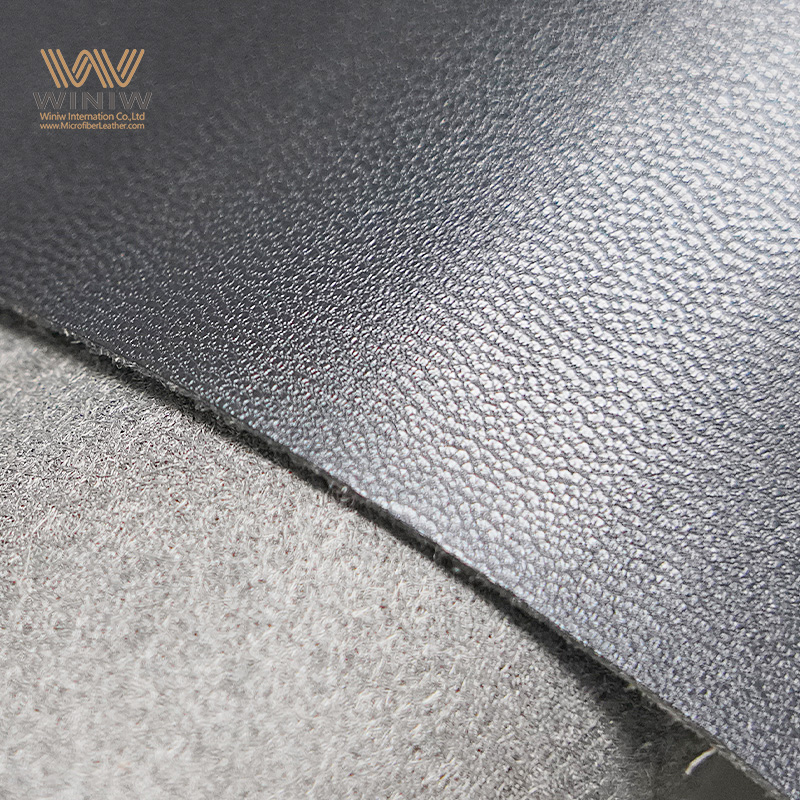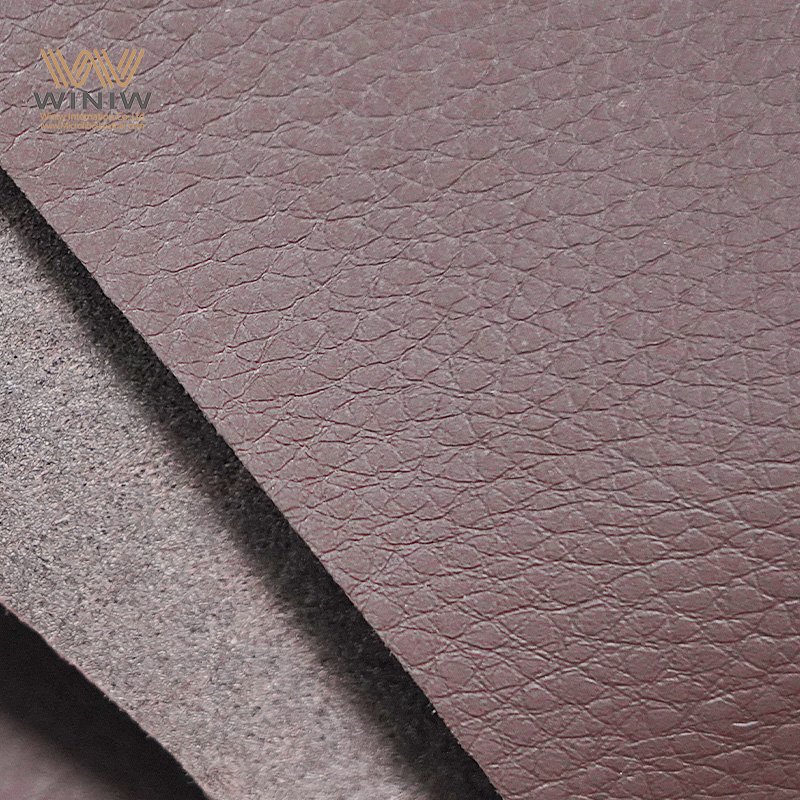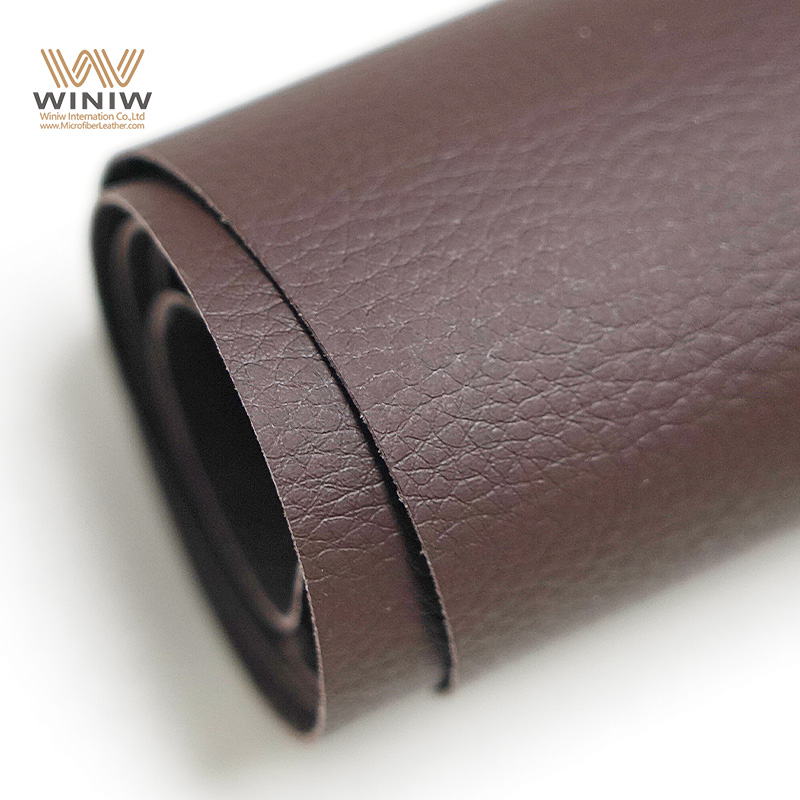
Лучший выбор между обувью из кожзаменителя и обувью из натуральной кожи зависит от индивидуальных приоритетов, таких как доступность, долговечность, этика и стиль. Обувь из кожзаменителя более доступна и привлекательна для тех, кто ценит экологичность. Обувь из искусственной кожи привлекает покупателей, которые хотят стильный образ без животных. продукты Обувь из натуральной кожи обеспечивает длительный комфорт и долговечность. Читателям стоит задуматься о том, какие факторы имеют наибольшее значение, прежде чем принимать решение.
При выборе обуви учитывайте свой бюджет. Кожзаменитель обеспечивает стильный вид по более низкой цене, что делает его идеальным вариантом для покупателей с ограниченным бюджетом.
Оцените комфорт и воздухопроницаемость. Натуральная кожа облегает стопу и обеспечивает циркуляцию воздуха, обеспечивая длительный комфорт.
Подумайте о долговечности. Обувь из натуральной кожи может прослужить до 15 лет при правильном уходе, тогда как кожзаменитель обычно служит всего несколько лет.
Подумайте о своих ценностях. Выбирайте кожзаменитель, если он не вредит животным, или натуральную кожу для классического, роскошного стиля, который будет красиво выглядеть с годами.
Помните о воздействии на окружающую среду. У обоих материалов есть недостатки, поэтому рассмотрите экологичные альтернативы, такие как переработанные или растительные материалы.
Обувь из искусственной кожи, также известная как обувь из искусственной кожи, изготавливается из синтетических материалов, имитирующих внешний вид и текстуру натуральной кожи. Производители часто используют поливинилхлорид (ПВХ) или полиуретан (ПУ) для создания такой обуви. Искусственная кожа имеет гладкую и мягкую поверхность, что делает её популярной среди тех, кто хочет стильно выглядеть, не используя материалы животного происхождения. Многие выбирают обувь из искусственной кожи, потому что она лёгкая и считается веганской. Ботинки из искусственной кожи стали модным вариантом для покупателей, которые предпочитают избегать материалов животного происхождения. Технология производства искусственной кожи позволяет создавать широкий выбор цветов и отделок, предоставляя дизайнерам свободу в выборе стиля.
Обувь из натуральной кожи изготавливается из шкур животных, чаще всего коровьих. Кожевники обрабатывают и обрабатывают шкуры, создавая прочный и гибкий материал. Натуральная кожа обладает уникальными свойствами, которые отличают ее от синтетических аналогов. Материал способен впитывать и отводить влагу, что помогает сохранять ноги сухими и комфортными. Натуральная кожа также пропускает воздух, обеспечивая воздухопроницаемость и предотвращая чрезмерное накопление влаги. Со временем обувь из натуральной кожи принимает форму стопы владельца, обеспечивая индивидуальную посадку. Ботинки из натуральной кожи часто имеют естественный рисунок и неровности, что придает каждой паре уникальный вид. Толщина и мягкость натуральной кожи могут варьироваться в зависимости от процесса дубления и предполагаемого использования.
В следующей таблице представлены основные различия между искусственной и натуральной кожей. Этот обзор поможет читателям быстро оценить преимущества и недостатки каждого материала.
|
Особенность |
Натуральная кожа |
|
|---|---|---|
|
Материал |
Изготовлены из синтетических материалов (ПВХ или ПУ) |
Сделано из шкур и кожи животных |
|
Статус вегана |
Обдуманный веганская кожа , не причиняет вреда животным |
Не веганский, содержит продукты животного происхождения. |
|
Долголетие |
Срок службы около 5 лет и более. |
Может прослужить 3–10 лет в зависимости от качества. |
|
Чувствовать |
В целом мягче и глаже |
Более грубая текстура, со временем приобретает форму стопы |
|
Появление |
Имитирует кожу, но может не иметь естественных недостатков |
Имеет уникальные зернистые дефекты |
|
Масса |
Легче натуральной кожи |
Тяжелее из-за натуральных материалов |
|
Поглощение воды |
Не впитывает воду. |
Поглощает и выделяет влагу |
|
Воздухопроницаемость |
Ограниченный поток воздуха |
Позволяет воздуху и влаге проникать |
|
Теплоизоляция |
Минимальная изоляция |
Обеспечивает надежную теплоизоляцию |
|
Ковкость |
Держит форму, но не обволакивает стопу |
Принимает уникальную форму стопы |
Кончик: Выбирая между обувью из кожзаменителя и натуральной кожи, подумайте, как каждый материал подходит вашему образу жизни. Искусственная кожа — это доступная цена и удобство для животных, а натуральная кожа — долговечность и комфорт, которые прослужат долгие годы.

Споры о том, что лучше: искусственная или натуральная кожа, часто основаны на личных ценностях и практических потребностях. Некоторые предпочитают искусственную кожу из-за её этических преимуществ и современного стиля. Другие выбирают натуральную кожу из-за её классического вида, воздухопроницаемости и способности адаптироваться к форме стопы. У обоих материалов есть свои плюсы и минусы, поэтому выбор зависит от личных предпочтений.
Обувь из искусственной кожи Покупателей часто привлекают лёгкость и гладкая поверхность. Многие поначалу находят эту обувь удобной, поскольку материал кажется мягким и гибким. Однако искусственная кожа плохо пропускает воздух. Пластиковая основа искусственной кожи удерживает тепло и пот внутри обуви. Это может привести к перегреву и потливости ног, особенно при длительном ношении или в тёплую погоду. Те, кто носит обувь из кожзаменителя длительное время, могут испытывать дискомфорт из-за отсутствия вентиляции. Обувь из искусственной кожи также не впитывает влагу, поэтому ноги могут быть влажными и липкими.
Примечание: Искусственная кожа имеет свойство удерживать тепло и пот, что может вызывать дискомфорт у тех, кому нужна обувь для повседневного ношения.
Обувь из натуральной кожи дарит совершенно новые ощущения. Натуральный материал обеспечивает воздухопроницаемость, позволяя воздуху и влаге свободно циркулировать внутри обуви. Это помогает сохранять ноги прохладными и сухими в течение дня. Натуральная кожа пористая и впитывающая, что способствует отводу влаги и сохранению тепла. Со временем обувь из натуральной кожи принимает форму стопы, обеспечивая индивидуальную посадку и дополнительный комфорт. Многие выбирают обувь из натуральной кожи для повседневной носки, поскольку этот материал снижает риск потливости и перегрева ног.
Ботинки из натуральной кожи обеспечивают лучшую воздухопроницаемость, уменьшают потерю влаги и сохраняют ноги в прохладе.
Натуральная кожа воздухопроницаема, впитывает влагу и пориста, что способствует отводу влаги и сохранению тепла.
Сравнение комфорта и воздухопроницаемости искусственной и натуральной кожи показывает очевидную разницу. Искусственная кожа изначально мягкая, но не обеспечивает вентиляцию. Натуральная кожа обеспечивает длительный комфорт, эффективно отводя тепло и влагу.

Обувь из искусственной кожи Обувь из искусственной кожи выглядит стильно, но её долговечность часто уступает натуральной коже. Срок службы большинства изделий из кожзаменителя составляет от одного до пяти лет, в зависимости от ухода и качества материалов. Искусственная кожа со временем трескается и шелушится, особенно под воздействием тепла, влаги или частого сгибания. Пластиковая основа искусственной кожи не растягивается и не восстанавливает форму, как натуральные материалы, поэтому обувь может быстрее терять форму.
Продлить срок службы обуви из искусственной кожи можно несколькими способами:
Регулярно чистите и обрабатывайте обувь кондиционером, чтобы она оставалась увлажненной и не допускала появления трещин.
Отполируйте и защитите обувь, чтобы сохранить ее внешний вид и предотвратить повреждения.
Дайте обуви как следует высохнуть после полировки, чтобы избежать скопления грязи.
Выбирайте качественную обувь, чтобы гарантировать ее долговечность.
Чистите обувь после каждой носки, чтобы предотвратить скопление грязи.
Те, кто следует этим рекомендациям, часто замечают, что их обувь из искусственной кожи служит дольше. Однако даже при тщательном уходе искусственная кожа не может сравниться с натуральной по износостойкости на протяжении многих лет.
Обувь из натуральной кожи отличается впечатляющей долговечностью. Многие пары служат несколько лет, а некоторые даже становятся лучше со временем. Натуральные волокна натуральной кожи устойчивы к разрывам и растяжениям, что помогает обуви сохранять форму и прочность. Срок службы обуви из натуральной кожи зависит от типа кожи и метода дубления.
Хромовое дубление позволяет получить мягкую, эластичную, водостойкую и прочную кожу. Этот метод используется для изготовления большинства изделий из верха обуви.
Растительное дубление создаёт прочную кожу, но она более склонна к образованию пятен. Со временем цвет меняется: светлые оттенки темнеют, а тёмные — светлеют.
Комбинированное дубление сочетает в себе особенности хромового и растительного дубления. Конечные характеристики зависят от конкретного процесса.
Правильный уход, такой как регулярная чистка и кондиционирование, продлевает срок службы обуви из натуральной кожи. Многие выбирают натуральную кожу за её способность выдерживать ежедневную носку и со временем приобретать уникальный характер.

Обувь из искусственной кожи Часто обувь имеет гладкую и однородную поверхность. Дизайнеры используют синтетические материалы для создания однородной текстуры, имитирующей натуральную кожу. Многие покупатели отмечают, что искусственная кожа имеет глянцевую поверхность и представлена в широкой цветовой гамме. Производители легко добавляют узоры или металлизированные элементы, придавая обуви современный и модный вид. Искусственная кожа не имеет естественных дефектов, поэтому каждая пара выглядит практически одинаково.
Обувь из искусственной кожи понравится тем, кто предпочитает элегантный вид.
Материал лучше противостоит пятнам и истиранию, чем некоторые натуральные варианты.
Многие бренды используют искусственную кожу для создания смелых дизайнов и ярких оттенков.
Те, кто предпочитает элегантный и безупречный стиль, часто выбирают обувь из искусственной кожи. Этот материал подходит модницам, которые любят экспериментировать с разными образами.
Обувь из натуральной кожи выделяется уникальным рисунком и естественными вариациями. Каждая пара имеет едва заметные различия в цвете и текстуре, что делает каждую пару уникальной. Со временем натуральная кожа покрывается патиной под воздействием воздуха, солнечного света, пота и кожного сала. Этот процесс создаёт мягкую текстуру и естественный блеск, отличающие высококачественную кожу.
Подобно шотландскому виски, медленно созревающему в дубовой бочке, высококачественная кожа с возрастом и воздействием атмосферных условий становится только лучше.
Патина добавляет индивидуальности и аутентичности, символизируя качество и долговечность. Многие эксперты моды ценят этот элемент, поскольку он рассказывает историю и усиливает визуальную привлекательность обуви.
Патина улучшает эстетический вид кожаных изделий.
Развитая патина является признаком высококачественных материалов.
Каждая патина рассказывает отдельную историю, добавляя изделию очарования.
Обувь из натуральной кожи понравится тем, кто ценит классический стиль и индивидуальность. Материал изящно стареет, предлагая вневременной вид, который меняется со временем.

Обувь из искусственной кожи Отличаются доступной ценой. Многие покупатели выбирают эту обувь, потому что она выглядит стильно и стоит гораздо дешевле натуральной кожи. На большинстве крупных рынков средняя цена на обувь из искусственной кожи составляет около 30 долларов. Сандалии из искусственной кожи стоят ещё дешевле, в среднем около 19 долларов. Такой ценовой диапазон делает их доступными для студентов, молодых специалистов и всех, кто хочет обновить свой гардероб без особых затрат.
|
Тип обуви |
Средняя цена |
Долговечность |
|---|---|---|
|
Обувь из кожзаменителя |
30 долларов |
Несколько месяцев |
|
Тип сандалий |
Средняя цена |
|---|---|
|
Сандалии из искусственной кожи |
~19 долларов |
Обувь из искусственной кожи привлекает покупателей с ограниченным бюджетом, которые ценят доступность. Она позволяет экспериментировать с разными стилями и цветами без значительных финансовых затрат. Однако низкая цена часто подразумевает потерю долговечности. Большинство моделей обуви из искусственной кожи служат всего от нескольких месяцев до пары лет, в зависимости от условий использования и ухода.
Совет: обувь из искусственной кожи отлично подойдет покупателям, которые следят за модой и хотят обновлять свой образ каждый сезон, не тратя лишних денег.
Обувь из натуральной кожи — это более дорогостоящее приобретение. Средняя цена на обувь из натуральной кожи достигает 250 долларов, а сандалии из натуральной кожи стоят около 117 долларов. Эти цены отражают качество материалов и мастерство изготовления каждой пары. Многие покупатели считают, что эта цена оправдана долгим сроком службы обуви из натуральной кожи.
|
Тип обуви |
Средняя цена |
Долговечность |
|---|---|---|
|
Обувь из натуральной кожи |
250 долларов |
До 15 лет |
|
Тип сандалий |
Средняя цена |
|---|---|
|
Сандалии из натуральной кожи |
~117 долларов |
Обувь из натуральной кожи отличается превосходной стоимостью с течением времени. Благодаря своей долговечности одна пара может прослужить до 15 лет при правильном уходе. Для тех, кто ценит долговечность и классический стиль, более высокая первоначальная стоимость часто означает более доступную цену в долгосрочной перспективе. Многие считают обувь из натуральной кожи инвестицией в комфорт и внешний вид.
Примечание: хотя первоначальная цена может показаться высокой, со временем обувь из натуральной кожи может сэкономить деньги, поскольку сокращается необходимость в частой замене.
Обувь из искусственной кожи Это создает ряд экологических проблем. Производители используют ископаемое топливо для производства пластиковых материалов, используемых в этой обуви. Этот процесс сопровождается выбросами парниковых газов и способствует изменению климата. На фабриках часто отсутствуют системы переработки искусственной кожи, что означает, что большая часть обуви оказывается на свалках. Этот материал не поддается биологическому разложению и может выделять микропластик и токсичные соединения при разложении или сжигании. Загрязнение, возникающее в процессе производства, наносит вред экосистемам и ухудшает качество воздуха и воды.
Основные экологические проблемы, связанные с искусственной кожей:
Производство зависит от ископаемого топлива.
Системы переработки искусственной кожи по-прежнему ограничены.
Производство способствует изменению климата.
Загрязнение от заводов наносит ущерб экосистемам.
Кожа на основе пластика может выделять микропластик и токсичные соединения.

Сравнение выбросов углерода показывает, что готовая кожа производит 22,48 кг CO₂e на квадратный метр, в то время как коровья кожа достигает 110,0 кг CO₂e на квадратный метр. Производство искусственной кожи также генерирует значительные выбросы, хотя точные цифры варьируются в зависимости от фабрики и региона.
|
Материал |
CO₂e на м² |
|---|---|
|
Готовая кожа |
22,48 кг |
|
Кожа из коровьей кожи |
110,0 кг |
Обувь из натуральной кожи сама по себе оказывает воздействие на окружающую среду. В процессе дубления используются химикаты, которые могут загрязнять воду и почву. Фабрики выбрасывают в атмосферу такие загрязняющие вещества, как химическое потребление кислорода (ХПК), биохимическое потребление кислорода (БПОК), общее количество растворенных и взвешенных веществ, хлориды и сульфаты. Эти вещества загрязняют водоёмы и ухудшают качество почвы. Однако натуральная кожа является естественным биоразлагаемым продуктом, что означает, что обувь со временем разлагается, не выделяя вредный микропластик.
|
Материал |
Биоразлагаемость |
|---|---|
|
Натуральная кожа |
Естественно биоразлагаемый |
|
Кожзаменитель |
Не поддается биологическому разложению или поддается лишь частично, при разложении может выделять вредные вещества. |
Обувь из натуральной кожи служит дольше, что сокращает количество отходов. Натуральный материал может быть возвращен в окружающую среду, не причиняя долгосрочного вреда. Тем не менее, процесс дубления загрязняет окружающую среду, что негативно сказывается на местных экосистемах.
Примечание: обувь как из искусственной, так и из натуральной кожи имеет экологические недостатки. Искусственная кожа использует ископаемое топливо и не разлагается, в то время как производство натуральной кожи загрязняет воду и почву, но обладает лучшей биоразлагаемостью.
Искусственная кожа Привлекает многих потребителей, заботящихся о благополучии животных. Этот материал не содержит продуктов животного происхождения или побочных продуктов. Производители создают искусственную кожу из синтетических материалов, поэтому в её производстве не участвуют животные. Многие выбирают обувь из искусственной кожи, чтобы избежать поддержки отраслей, использующих шкуры животных. Покупатели-веганы часто выбирают этот вариант, поскольку он соответствует их этическим убеждениям. Искусственная кожа позволяет носить модную обувь, не причиняя вреда животным. Некоторые бренды также подчеркивают свою политику отказа от жестокого обращения с животными, что привлекает покупателей, уважающих права животных.
Выбор искусственной кожи может помочь снизить спрос на материалы животного происхождения в индустрии моды.
Производство натуральной кожи вызывает ряд проблем, связанных с благополучием животных. Эта отрасль использует шкуры животных, чаще всего коров. Все животные, используемые для производства кожи, в конечном итоге отправляются на убой. Коровы, известные своим интеллектом и эмоциональностью, не рассматриваются в качестве кандидатов в цепочке поставок кожи. Этот процесс часто сопряжен с болезненными процедурами. Рабочие могут обрезать рога и клеймить кожу, не обеспечивая обезболивания. Телята иногда испытывают стресс, разлучаясь с матерями.
Животных забивают ради шкур.
Коровы подвергаются таким болезненным процедурам, как отрезание рогов и клеймение.
Телята могут быть разлучены с матерями, что приводит к эмоциональному стрессу.
Из-за этих практик многие потребители не решаются поддерживать натуральную кожу. Некоторые выбирают бренды, которые используют более гуманные методы или сертифицированные этичные источники. Однако большая часть натуральной кожи на рынке поступает из традиционных цепочек поставок, где благополучие животных по-прежнему вызывает серьёзную озабоченность.
Обувь из искусственной кожи Уход за обувью прост для большинства пользователей. Материал устойчив к пятнам и воде, поэтому чистка занимает минимум времени. Для удаления грязи и пыли часто используют мягкую неабразивную ткань. Этот метод предотвращает появление царапин и сохраняет обувь как новую. Кедровые колодки впитывают влагу и сохраняют форму после каждой носки. Хранение обуви в пылевом мешке защищает её от солнечного света и пыли. Тканевые мешки или вентилируемые коробки работают лучше, чем пластиковые пакеты, которые могут задерживать влагу и вызывать повреждения. Переворачивание обуви обеспечивает вентиляцию и снижает общий износ. Регулярный осмотр подошвы помогает определить, когда требуется замена, что может продлить срок её службы.
Используйте кедровые колодки после каждой носки.
Храните обувь в пылевом мешке или в проветриваемом ящике.
Избегайте использования пластиковых пакетов для хранения.
Меняйте обувь, чтобы уменьшить износ.
Протирайте мягкой тканью.
Проверьте подошву и рассмотрите возможность ее замены.
Совет: Регулярная перестановка и правильное хранение помогут обуви из искусственной кожи оставаться свежей и служить дольше.

Обувь из натуральной кожи требует большего ухода для поддержания её качества. Владельцы регулярно чистят обувь, чтобы удалить грязь и предотвратить её накопление. Кондиционер сохраняет кожу эластичной и предотвращает растрескивание. Полировка восстанавливает блеск и защищает поверхность от влаги. Эти процедуры помогают сохранить естественный вид и ощущение обуви. Для натуральной кожи важно бережное хранение, например, использование кедровых колодок и пылесборников. В отличие от искусственной кожи, для сохранения её прочности и внешнего вида, натуральная кожа нуждается в кондиционировании и полировке. Те, кто правильно ухаживает за своей обувью, наслаждаются её долгим сроком службы и более насыщенным блеском.
Регулярно чистите обувь.
Обрабатывайте кожу кондиционером, чтобы она оставалась мягкой.
Полировка для восстановления блеска и защиты.
Хранить с кедровыми колодками и пылевыми мешками.
Правильный уход гарантирует, что обувь из искусственной и натуральной кожи останется удобной и стильной на долгие годы.
Покупатели с ограниченным бюджетом часто ищут обувь, которая сочетает в себе цену, стиль и практичность. Обувь из кожзаменителя и искусственной кожи — это доступный вариант для тех, кто хочет быть в тренде, не тратя много денег. Многие бренды предлагают сапоги из искусственной кожи Разнообразие стилей и цветов позволяет легко найти пару, подходящую к любому наряду. Эта обувь отлично подойдёт студентам и молодым специалистам, которые хотят часто обновлять свой гардероб.
Любителям тренироваться в зале настоятельно рекомендуется лёгкая спортивная обувь с хорошей боковой поддержкой. Такая обувь обеспечивает свободу движений и надёжную защиту стопы. Модная повседневная обувь также подходит для экономных покупателей. При выборе повседневной обуви покупателям следует обращать внимание на дизайн и качество материалов, а не на функциональность. Ботинки из искусственной кожи часто отвечают этим требованиям, предлагая стиль и комфорт по более низкой цене.
Совет: покупатели с ограниченным бюджетом могут обновлять свой образ каждый сезон с помощью обуви из кожзаменителя, наслаждаясь последними модными тенденциями без больших финансовых затрат.
Устойчивое развитие стало одним из главных приоритетов для многих потребителей. Тем, кто хочет уменьшить своё воздействие на окружающую среду, следует обратить внимание на материалы, используемые в производстве обуви. Хотя у искусственной и натуральной кожи есть свои плюсы и минусы, ни одна из них не считается наиболее экологичным вариантом по мнению экологических организаций. Наиболее экологичными материалами для обуви являются:
Переработанный пластик из бутылок или отходов океана
Органический хлопок, выращенный без синтетических химикатов
Конопля, которая быстро растет и требует меньше ресурсов
Пробка — возобновляемый и биоразлагаемый материал для подошв
Переработанная резина из старых шин
Переработанный полиэстер, изготовленный из бытовых отходов
Бамбук — быстрорастущий и возобновляемый ресурс
Tencel или Lyocell, изготовленный из древесной массы, полученной с использованием экологически чистых источников
Piñatex — не тестируемый на животных аналог кожи из листьев ананаса
Шерсть, полученная этичным образом
Покупателям, которые ценят экологичность, стоит обратить внимание на обувь из этих материалов. Некоторые бренды предлагают ботинки и кроссовки из искусственной кожи, изготовленные из переработанных или растительных компонентов. Такие варианты помогают сократить отходы и поддерживать более экологичный образ жизни.

Роскошь и стиль часто идут рука об руку с обувью из натуральной кожи. В индустрии моды натуральная кожа считается материалом премиум-класса благодаря своей долговечности и универсальности. Высококачественная кожа требует искусного мастерства и тщательной обработки. Многие ассоциируют обувь из натуральной кожи со статусом и изысканностью. Уникальный рисунок зернистости и патина, появляющиеся со временем, добавляют ей индивидуальности и ценности.
Ключевые факторы, которые делают обувь из натуральной кожи предметом роскоши:
Историческая долговечность и универсальность
Квалифицированные усилия по производству высококачественной кожи
Статус и престиж были связаны с пользователями кожаных изделий на протяжении всей истории
Модники часто выбирают натуральную кожу за её вневременную привлекательность. Ботинки из искусственной кожи также могут похвастаться стильным дизайном, но натуральная кожа остаётся лучшим выбором для тех, кто ценит классический, роскошный вид, который сохранится на долгие годы.
Повседневная одежда требует комфорта, долговечности и простоты ухода. Ботинки и туфли из искусственной кожи лёгкие, комфортные и устойчивые к пятнам, что делает их подходящими для ежедневного использования в мягких условиях. Тем, кто проводит много времени на ногах, может подойти обувь из натуральной кожи. Натуральная кожа облегает стопу, обеспечивает воздухопроницаемость и хорошо отводит влагу. Это делает натуральную кожу отличным выбором для тех, кому нужна надёжная обувь для работы или частых прогулок.
Выбирая обувь для повседневной носки, покупателям следует учитывать свой образ жизни и окружающую среду. Искусственная кожа хорошо подходит для краткосрочного ношения и смены стиля. Натуральная кожа подходит тем, кто ценит долговечность и комфорт. У обоих материалов есть свои плюсы и минусы, поэтому выбор зависит от индивидуальных потребностей.
Примечание: повседневная обувь должна сочетать в себе комфорт, долговечность и стиль. Учитывайте, как часто вы будете носить обувь и в каких условиях она будет эксплуатироваться.
Выбор между обувью из кожзаменителя и натуральной кожи зависит от индивидуальных предпочтений. Кожзаменитель подходит тем, кто ценит доступность и заботится о животных. Натуральная кожа обеспечивает большую прочность и комфорт. При выборе учитывайте следующие факторы:
Долговечность: Кожзаменитель изнашивается быстрее натуральной кожи.
Комфорт: кожа принимает форму стопы, а кожзаменитель — нет.
Воздействие на окружающую среду: Оба материала имеют недостатки.
Личные ценности: этика и устойчивое развитие имеют значение.
Каждый человек должен взвесить эти моменты. Лучший выбор соответствует его образу жизни и убеждениям. Уверенность в правильности решения приносит удовлетворение с каждым шагом.

Сканирование в wechat:
